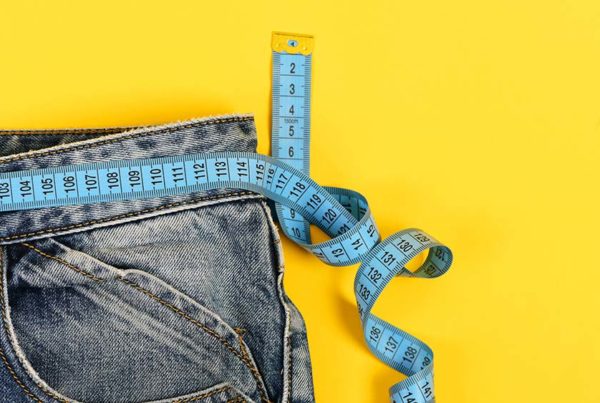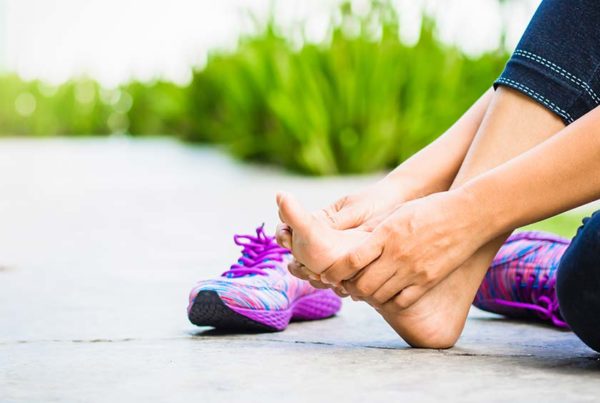Many health experts agree avoiding the sun may be a serious risk for disease.
Is avoiding the sun as big a health risk as smoking cigarettes?
Many health experts believe so, and the latest science is backing them up.
Dr. Pelle Lindqvist and colleagues at Sweden’s Karolinska University Hospital, in their recent study from the Journal of Internal Medicine, recently equated sun avoidance with smoking, and went a step further, stating that: “An inborn internal reward system for sun exposure indicates that UV exposure is important for health.”
The same authors previously showed that the mortality rate was doubled in women who avoided active sun exposure, compared to those with the highest sun exposure, and found no differences in malignant melanoma mortality between those with regular sun exposure and those who avoid it.
Much of this information is not new. A number of studies have shown that those with the highest sun exposure had the longest life expectancy.
Inadequate levels of this critical nutrient can impair body and brain. While vitamin D is called a “vitamin,” it’s really a unique steroid hormone, which performs a number of different tasks in the athletic body and brain. These include helping muscles function better, controlling inflammation and immunity, improving brain and hormone function, regulating calcium absorption and utilization, and promoting the work of a couple thousand genes.
Studies continue to show more of this pro-hormone is needed than once thought, and that there is a real epidemic of deficiency, even in some who spend a significant amount of time living, working, and training outdoors.
A recent study in the British Medical Journal demonstrated that avoiding the sun or having low levels of vitamin D is associated with the same risk of death as smoking, inactivity or obesity.
The caveat: Don’t get burned
To accomplish this one must know their exposure limits. The obvious is that if you’re in northern Australia your time is the sun should be less than if you’re in Sweden; likewise, if your skin is darker or lighter you must adjust to more or less exposure.
The body has natural protection for overexposure to the sun. The skin’s production of melanin is responsible for this tanning process providing protection against excess ultraviolet light. It’s normal for the skin to redden during long exposure in the sun – but by day’s end, or the next morning, the skin should be back to normal.
This does not constitute a sunburn, just a sign of high exposure which should be tolerated by a healthy body. If in doubt about how much burn you have, cool it – the use of cold water immediately after a long period in the sun can dramatically speed the healing of the skin. While a cool shower is helpful, getting into cool water, covering all areas of burn if possible, is ideal.
(If you do get burned, get in a tub of cold water for as long as it takes the burning sensation to stop.)
Stay healthy. Other factors such as chronic inflammation, higher body fat and excess stress contribute significantly to all diseases, including skin cancers.
Overexposure to sun is clearly a risk for malignant melanoma, but it is worsened when using sunscreen and remaining in the sun longer (many people have mistakenly been led to believe they could stay in the sun longer by using regular applications of sunscreen).
One observation I made many years ago is that healthy people don’t burn nearly as much or as fast as those who are not as healthy. This may be due to a variety of reasons, as a healthy diet can protect your skin from overexposure to the sun:
- Getting “burned” by the sun is associated with an inflammatory reaction — the more inflammation the more burn. Maintaining a good balance of fats, especially the inclusion of fish oil, protects against these inflammatory reactions.
- A full spectrum of antioxidants — from beta carotene and lycopene to the vitamin E complex (all eight components) and natural vitamin C — found in the diet can also help protect the skin during sun exposure; in particular, these help control the free radical reactions in the skin.
- Because a long day in the sun can significantly reduce the body’s folic acid levels, consuming sufficient vegetables and fruits will help offset this, potentially restoring healthy skin.
- Those with normal levels of vitamin D may not burn as fast or as badly as those with low levels.
The following are four important ways to keep our skin healthy when exposed to the sun:
- Use the Sun Wisely
Everyone knows that spending the afternoon lying on the beach in the strong summer sun is not healthy because you tend to burn the skin (although people continue doing it). But we all need sun exposure — adults of all ages and children from an early age.
If you work in the midday summer sun and need more protection, you should cover yourself — a hat and light, long sleeves are usually sufficient. Those who are sun-sensitive should avoid midday sun, and sometimes even late-morning and mid-afternoon summer sun. Most people who are sun-sensitive already know it. In this case it’s important to take a natural vitamin D supplement, such as from cod liver oil, as other food sources of this nutrient are inadequate.
- Naturally Protect Your Skin
There are a variety of natural ways the body protects itself from the sun. These include being tan, having optimal levels of vitamin D, consuming foods with adequate levels of various nutrients, including antioxidants and omega-3 fats. In addition, even healthy sun exposure produces a mild (acute) inflammatory reaction on the skin. This normal response should quickly disappear if fats are balanced enabling the body to recovery from a long training or racing event in the sun, for example.
- Eat Right
The very best skin-care products are nutrients found in the healthy foods we eat. Essential fats, antioxidants, vitamin A and other nutrients from our diet offer the greatest skin care and the best natural protection from the sun. Vegetables and fruits provide most of these nutrients, with fish oil, egg yolks and whey products offering other valuable factors.
- Don’t Eat Sunscreen!
My recommendation has always been to not put anything on your skin you’re not willing to eat! That’s because sunscreen, along with so many things people put on their skin, gets absorbed into the body.
The sun is our primary source of vitamin D, and the best way to get it is by spending some quality time getting sun exposure. Scheduling training sessions at certain times of the day throughout the year to take advantage of the sun is very important to help obtain this hidden benefit for improved athletic performance.
Sun versus D
Sun exposure and vitamin D are both important and separate. Vitamin D levels are best developed and maintained by adequate sun exposure. Supplementing with vitamin D can have value, but won’t replace being in the sun.
While vitamin D is considered an essential nutrient, it functions more like a hormone. But the benefits of the sun go beyond this compound, especially the benefits obtained from the sun’s health effects through the eyes (without glasses of any type or contact lenses) and the influence on the brain and body. Consider the results from these studies:
- Light stimulation of the retina influences the production of melatonin by the pineal gland in the brain. Melatonin is important for many aspects of health, not just sleep quality but also in regulating the body’s natural rhythms through other hormones.
- Reduced sun exposure and lower vitamin D may increase the risk of Type 2 diabetes mellitus.
- There is an approximately 80 percent lower incidence of Type 1 diabetes among those taking vitamin D supplementation during the first year of life.
- Sun exposure may lower the risk of multiple sclerosis, with vitamin D deficiency related to an increased frequency of relapse.
- Low vitamin D levels are related to increased risk of cardiovascular disease.
- In northern countries there is an increased risk of heart disease, stroke and embolism in winter as compared to summer.
- The lack of UVB radiation increases the risk of hypertension, reduces calcium absorption and impairs calcium metabolism.
- UV radiation induces endorphin production, which can reduce stress levels.
My go-to remedy to prevent colds and flu has always been the sun. The relationship between sun, vitamin D and the immune system is not new, but has become a hot area of research lately:
- Vitamin D has immunoregulatory properties, with deficiency associated with poor immune function and increased disease susceptibility.
- The sun and vitamin D have antimicrobial effects.
- Vitamin D may be protective against respiratory infections, such as tuberculosis (not a new idea), influenza and others.
- Individuals with chronic pulmonary disease are reported to have significantly more exacerbations in the presence of low vitamin D.
- Vitamin D supplementation (4000 IU/day) was found to reduce antibiotic consumption by approximately 60 percent in patients with immune deficiency.
- Patients >70 years of age who took vitamin D supplements consumed 50 percent less antibiotics compared to the placebo group.
- Low vitamin D levels may predict clostridium infection-associated diarrhea.
Skin Cancer
Our sun-phobic society, influenced largely by companies selling products, has resulted in generations of people avoiding the sun, significantly raising the risk of poor health and disease, including skin cancer.
There are three main types of skin cancer, with most but not all associated with UV light. Basal cell and squamous cell carcinomas are similar and often grouped as non-melanoma skin cancers, and generally have a nonfatal prognosis. Malignant melanoma can be serious and fatal (through metastasis), and is typically associated with a history of sunburn, including excessive and frequent exposure to tanning beds.
Some studies show a relationship between sunscreen use and cancer prevention while others have not. Still other studies show sunscreen use can actually increase the risk of malignant melanoma. Unfortunately, sunscreen manufacturers and cosmetic companies spend millions on marketing, using popular scare tactics to convince people to use their products.
Staying Tan
For most of my career I have recommended getting a good tan to protect the skin against excessive sun damage. In fact, tanning provides protection similar to sunscreen, and with protection specifically against the potentially dangerous UVA. A recent issue of Science (March 2, 2007) says the same: “A dark natural tan offers unparalleled protection against skin cancer.” Not everyone, of course, can tan. Very fair-skinned people, those with red hair and those with freckles, can burn quite easily, and these individuals must be very cautious when in the sun.
Continue on your Journey
Click the button below to read on about how to test whether your Vitamin D levels are healthy (and what to do about it).








